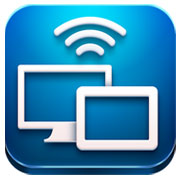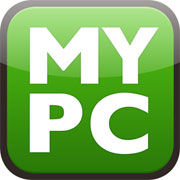
It’s a good idea to prune an Android device periodically, for a few reasons.
A mishmash of apps, some aging, have all kinds of on-device routines running that can negatively affect performance. Worse, some are continually accessing the Internet and eating into your data cap — unlimited wireless Internet on mobile devices is practically nonexistent these days.
Plus, the accumulation of apps and their associated data hogs now limited storage memory. It’s common to see no expandable storage options on may current phones.
I’ve written about ways to speed up a slowing phone before. In “How to Speed up a Sluggish Android Smartphone,” I explain how to get rid of superfluous apps, make space and re-install the factory stock software.
This follow-up suggests steps you can take to identify and eliminate other memory hogs: accumulating multimedia for one; and app launch icons taking over your home screens.
Offload Media
Media doesn’t have to be stored on the device. Offload media to a PC if device storage is full.
Step 1: Identify memory used by media assets by opening the device Settings. Settings is reached by touching the Settings cogwheel-like icon. Then scroll through to the Storage section.
You’ll see a graphical representation of storage in use, along with available space.
Step 2: Determine where best to free up space. Take a look at the Pictures and Videos space used in particular. Look for the numerical value next to the descriptive label.Video and images, unlike music, often don’t need to be stored on the device and can be moved.
Tip: HD video is a major memory hog. Photographs and music are other forms of media that take up a lot of space.
Step 3: Open the Settings option within Storage on the device. The Settings button within Storage is indicated by a vertical three-block icon.
Touch USB Connection on an Android KitKat OS device, and then connect as Media Device (MTP).
Step 4: Plug in a USB cable from the device to a PC and allow drivers to automatically install on the PC.
Tip: Mac users can click here to download similar, Mac-specific software for transferring files.
Step 5: Use the PC’s Windows Explorer to browse the files on the device. Drag and drop memory-hogging media files from the device to the PC. After performing the copy, delete the files on the device.
Tip: Video is in the Internal Storage, DCIM, Camera folder on the device.
Older versions of Android use slightly different methods. If your device allows the installation of an external SD card, look for an option to Transfer Data to SD Card.
Insert a spare card, and choose Transfer Data to Storage Card.
Organize your Screens
Install a lock screen-like Cover Lock Screen on your device if your home screens are full of app launch icons.
Cover Lock Screen, a recently updated app in beta, replaces the device’s lock screen with a third-party app that delivers most-used apps as you need them.
It learns which apps you use most, and where.
Step 1: Browse to the Google Play store. You’ll find it in the app drawer. Install the app by following the prompts.
Step 2: Open the Cover Lock Screen app and follow the prompts to enter your home and work addresses.
Step 3: Switch off the device’s screen and then turn it back on again. Cover Lock Screen will start to learn your most used apps based on your location. Access those apps straight from the lock screen, rather than plowing through full home screens.




















































